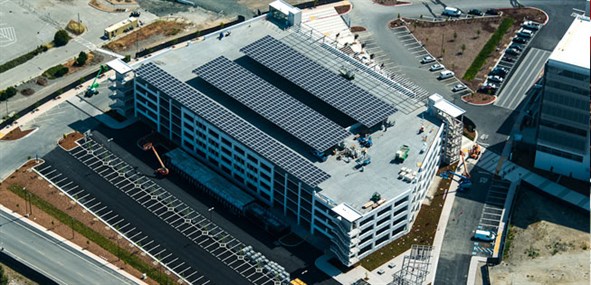Full Transparency
Our editorial transparency tool uses blockchain technology to permanently log all changes made to official releases after publication. However, this post is not an official release and therefore not tracked. Visit our learn more for more information.
In this guest blog, Brad discusses sustainability initiatives at Juniper Networks, where he is responsible for the strategic design, implementation and management of the company’s corporate citizenship and sustainability program. These efforts help Verizon to bring innovative Managed Services to market for Enterprise customers.
Juniper Networks shares Verizon’s sustainability values and goals. Every innovation we envision, every technology we create is informed by our desire to help solve our customers’ toughest challenges, while keeping sustainability top of mind.
As a supplier, we are an extension of Verizon’s ecosystem of sustainability – and a partner in helping to bring innovative solutions to manage the carbon emissions attributed to running Juniper equipment and to the supply chain.
Verizon and Juniper worked closely to advance the Juniper Networks®Junos® Express chipset to achieve lowered power requirements, increased performance and reduced cost for supporting private and public IP services – all of which help meet the growth challenges of Verizon’s customer base. Verizon deployed PTX5000 Packet Transport Router, giving the company the densest multiprotocol label switching (MPLS) platform that features world-record energy efficiency of 1.5 W per Gigabit of throughput.
Internally, this approach was applied when it came to designing and building Juniper’s new 635,000 square-foot corporate campus in Sunnyvale, California and expanding our footprint responsibly.
The Juniper Networks campus is a proving ground for what can be done when energy-efficiency measures and a state-of-the-art enterprise network are integrated from the ground up. Everything that carries data, voice and video is connected so that every performance aspect of the buildings can be monitored and optimized.
For example, the building automation system incorporates state-of-the-art direct digital controls, which resides on the Juniper network and provides the ability to have pinpoint accuracy for maximizing efficiencies in server labs and for comfort cooling in the office space. We are able to track energy consumption down to the minute, which allows us to better understand usage and identify ways to adjust the systems without putting labs at risk. Airside economizers have been located on the side of the buildings near the labs to provide more efficient cooling, reduce dependency on air conditioning units, and reduce chiller cycles. The system monitors outside air temperature and humidity, and when in the desired range, brings in outside air to cool the heat-intensive server labs. We also have water-side economizers to reduce the use of mechanical cooling (chillers).
These measures are projected to save 1 GWh in the first year.
Energy conservation measures coupled with installation of onsite clean energy sources are decreasing Juniper’s carbon footprint and taking demand off the power grid. Each new building is designed to operate at 8 MW, with about 1.4 MW of that energy coming from onsite alternative renewable sources:
- 1 MW Bloom Energy solid oxide fuel cells support the electrical loads in the labs. Their installation will result in a 24 percent reduction in electricity costs and a removal of approximately 14 tons of CO2.
- 300 kW solar panels support the campus and take demand off the power grid. It’s estimated this installation will result in an annual energy reduction of 464,104 kWh, which will offset about 380 tons of CO2.
- 97 kW Congenra Solar thermal system generates electricity and heat water for the building’s kitchen and showers. The annual energy produced is equivalent to a reduction of 38 tons of CO2.

Already, these features have contributed to the achievement of LEED certifications from the U.S. Green Building Council (Juniper’s Building A received Gold certification and Building B was awarded Platinum status) and a 2013 Structures Award in the Green Project/Innovation Design category. The successes and principles here will guide Juniper as we build our new Bangalore campus and improve the ongoing operations of existing offices and facilities. The results are a cut in Juniper’s carbon intensity and an impact on the total supply chain.
To learn more about how we are managing carbon emissions and the strategy for meeting CO2 reduction targets, read Juniper’s Corporate Citizenship and Sustainability Report.
